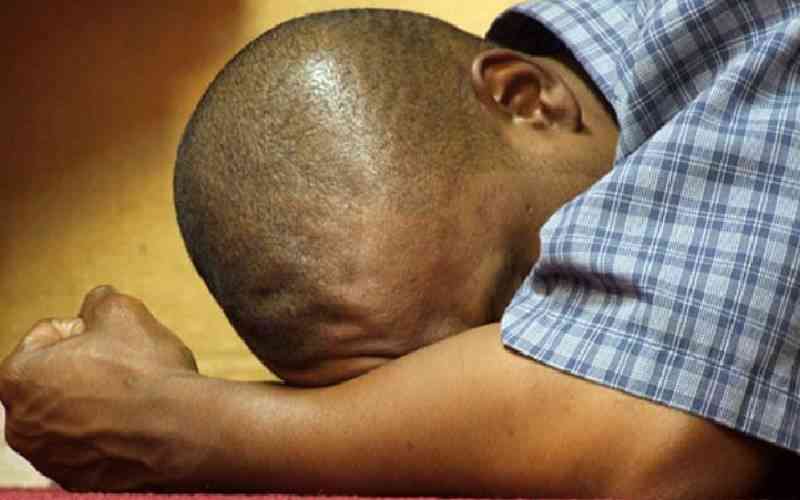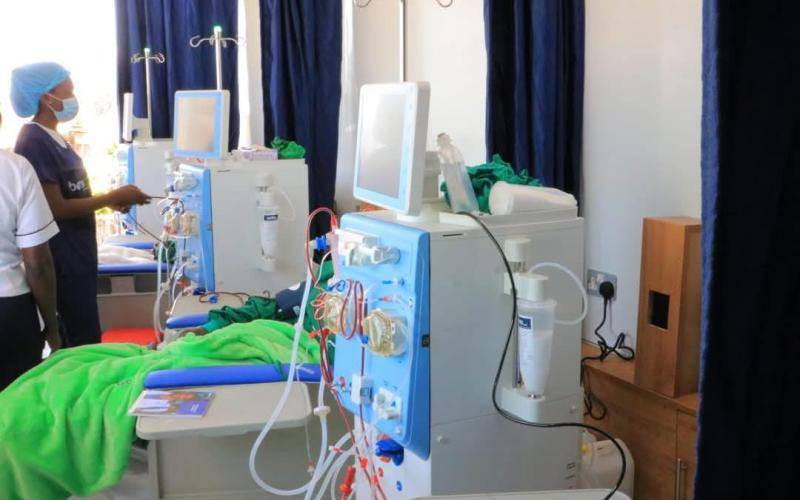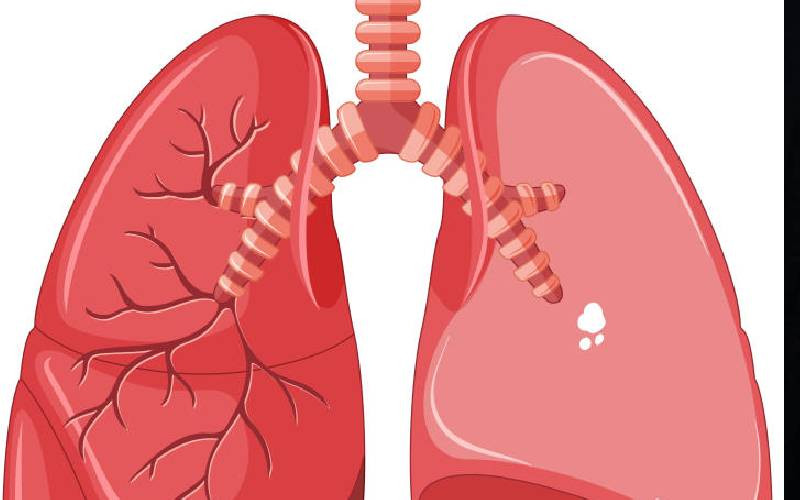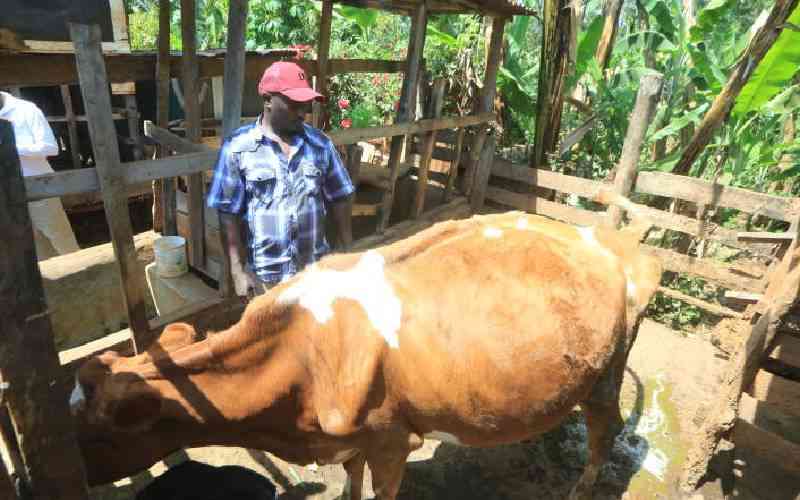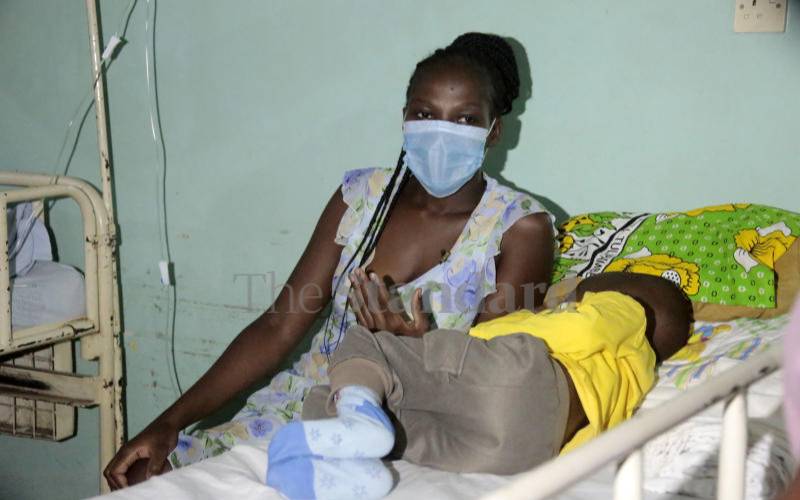
The hospital has become the second home for Seline Museka and her husband Humphrey Egessah and their children with sickle cell disease.
The couple from Karagita in Naivasha town have four children- three of whom had disabilities. Their eldest underwent hip replacement surgery attributed to complications from avascular necrosis (temporary or permanent loss of blood supply to the bone) that can cause bone collapse.
“When my children are in pain, I cannot even think of myself,” says the mother. “The pain is so debilitating.”
Questions from the children range from whether they will nurse sickle cell until death and she has no answers.
The couple married in 1997 and balancing caring for them alongside treatment has taken a toll on them.
Though both are sickle cell carriers, Seline sometimes bears the brunt as she is often accused of transmitting it and, “I feel life has been so unkind to me. Had I known that I was a sickle cell carrier, I would not have gotten married, as I am now seen as a bad omen.”
The couple’s first child was born at Matayos hospital in Busia, but died after developing a fever.
“My husband has been my strong pillar,” she says. “But he drains my emotions, as he is at times in denial, and accuses me of carrying the genes.”
The couple’s second child was delivered in 2000, but at ten months suffered fever, anaemia and had an enlarged heart.
The baby was observed at Naivasha Hospital, but referred to Kenyatta National Hospital where she was diagnosed with sickle cell- disease, which among children is managed via regular medication.
According to Seline, a sickle cell crisis is triggered by weather, anxiety and dehydration.
Each of the children require about Sh4, 000 to manage it and “blood transfusion is a must whenever blood level drops below five,” she says.
Dr Fred Okinyi, the chair of Sickle Cell Federation of Kenya and a lecturer at the University of Nairobi explained that sickle cell, an inherited disease, affects the red blood cells which are responsible for carrying oxygen in the body.
“Normal red blood cells are round, but people with the disease have sickle-like cells, which are not capable of passing through the normal blood vessels,” explained Dr Okinyi.
With reduced oxygen levels in the body, or infections, red blood cells stick together, blocking blood vessels, and lack of adequate normal circulation, leads to pain.
In some cases, the red blood cells break down, releasing haemoglobin, which breaks down to produce bilirubin responsible for yellowness in eyes.
Sickle cell is genetic and “if a carrier marries a sickle cell carrier, they have at least a 50 per cent chance of getting children who carry the abnormal gene, and 25 per cent of them will have sickle cell disease, and 25 per cent will be normal,” explained Dr Okinyi, adding the percentage of transmitting the disease to the child is a probability.
The disease is diagnosed through a sickle cell test called haemoglobin (HB) electrophoresis which measures different types of haemoglobins in red blood cells.
Sickle cell is managed with, among other drugs, hydroxyurea which reduces its severity and complications.
The drug is common in Africa where majority of patients are unable to afford bone marrow transplant, the preferred mode globally.
Anthony Mwangi, Cluster Head Novartis East Africa says they are committed to ensure an uninterrupted supply of some of the medicines like hydroxyurea.
“Early this year, the Ministry of Health listed hydroxyurea on the essential medicines list which will potentially make this product available to many patients,” he says.
The drug, Dr Okinyi says is supplemented with folic acid and antibiotics in addition to blood transfusions when necessary.”
In more advanced centers, there is exchange transfusion where a high percentage of sickle cells are removed to reduce severity of the disease.
Besides hydroxyurea, vaccination of children is encouraged. “If a sickler has any other diseases, they have to be treated first,” warns Dr Okinyi.
Sickle cell can be expensive as Kevine Odunga and her husband George explain. Their first child was diagnosed with sickle cell disease at six months though she later died of an unrelated cause.
When their second born and only living child was also diagnosed with sickle cell, Kevine was devastated. “My heart was heavy, and I would spend sleepless nights crying, I was in denial.”
The Odungas spend Sh15, 000 for folic acid, hydroxyurea and paludrine besides undergoing monthly transfusions.
“Managing sickle cell is financially draining. My daughter must use drugs, if not, the pain is so unbearable,” she said.
The Odungas did not know they were sickle cell carriers before they got married. Kevine’s elder sister, a sickle cell survivor, gave birth to ten children, all died except one, who is sickly. Her brother is also a carrier, whose children have died of the disease.
Couples with hereditary diseases are encouraged to undergo counselling and genetic assessment to calculate the possibility of transmitting the disease to children.
Dr Jemimah Kamano, an endocrinologist, chronic disease researcher and lecturer at Moi University, School of Medicine, says “it is a nightmare to raise a child with sickle cell disease with only hope of cure if you can do a bone marrow transplant.”
Dr Kamano says there is need to create awareness of hereditary and lifestyle diseases.
“Parties with sickle cells should make tough decisions if they need babies, or can use IVF, or adopt children, to avoid passing on the genes.”
Kevine and George Odunga, sickle cell carriers, opted not to get more children as there was a high likelihood of more sickle cell births and increased treatment expenses.
mkahenda@standardmedia.co.ke

